Quartz Countertops
We took a fun field trip to the stone and granite showroom! Initially, I was considering quartz for the countertops because it’s lauded to be maintenance-free and virtually indestructible. Because we’re selling this home in a couple of years, I wanted to keep that in mind. However, after seeing the quartz slabs in person, I was less than enthused about them. Quartz countertops are a fine and acceptable, but safe choice. Some mimicked the look of marble, but in my humble opinion, marble just can’t be replicated. Because marble is a natural stone, there’s a depth and feel to it, a realness to it. And no two slabs are the same – there’s just something truly magical about marble.
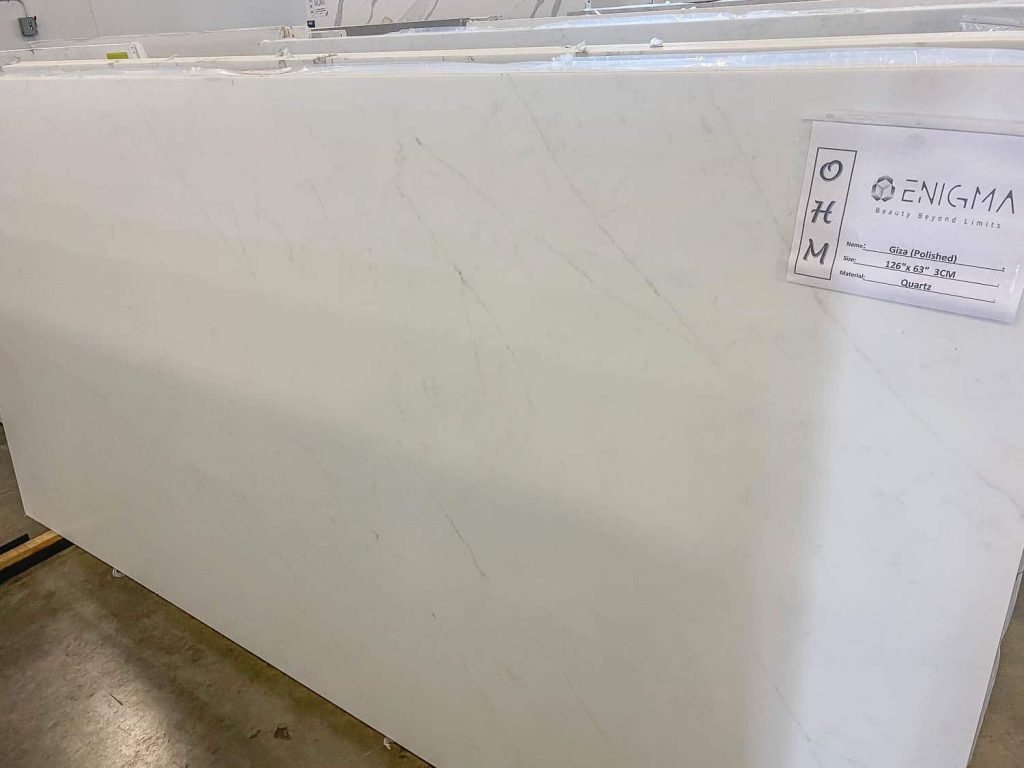
Quartz 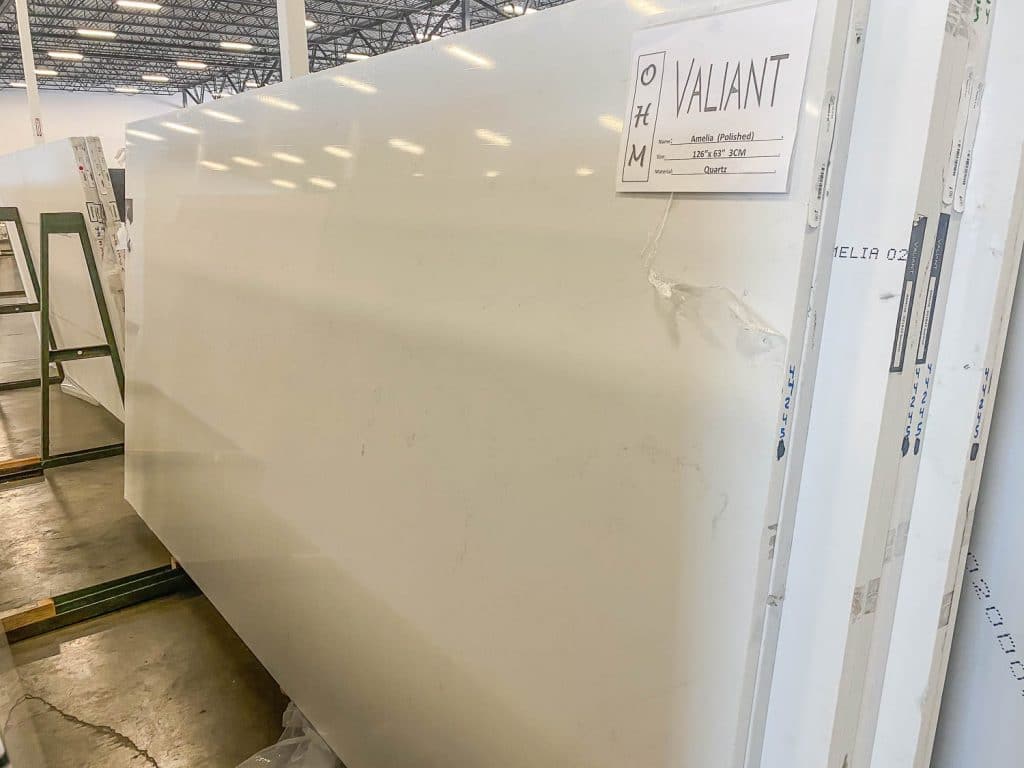
Quartz Quartz Quartz
Above are some of the quartz slabs I was considering. None of them really set my soul on fire, though. I mean, do countertops have to set souls on fire? Of course not, but I figured if I was spending the money on custom countertops, why not get what I really wanted? If I stick with the “safe” and “acceptable” choice, would I later regret it?
Calacutta, Carrara, and Statuario Marble
Below are some of the marble slabs that were on the showroom floor. Aren’t they just stunning? There are several types of white marble available on the market: the most notable being Calacutta, Statuario, and Carrara. Quarried in Carrara, Italy, (which is where it gets its name), Carrara is the most affordable kind of marble due to its wider availability. Carrara usually has more of a light grayish background with soft, feathery veins, while the more expensive varieties, like Calacutta and Statuario have whiter backgrounds and dramatic, striking veins. Calacutta is also quarried in Carrara, however because of its rarity, it tends to be more expensive. Statuario is typically what sculptors will use for their sculptures and has a crisp, white background with dark, bold veining.
Statuario Polished Marble Calacutta Polished Marble Calacutta Polished Marble Carrara Polished Marble
Many people shy away from marble because it requires more maintenance than quartz and can easily scratch, etch, and stain, but even after an absurd amount of research and understanding the time and effort it takes to care for marble, I still wasn’t deterred. Maybe I’m blindly optimistic, but I don’t think I’d mind some of the natural wear and tear – I think it would just become part of our family’s story, which I think is sweet.
Soapstone Countertops
Soapstone is another natural stone that I was seriously considering for our kitchen countertops. Like marble, it has a softer consistency than quartz, however the look is vastly different from marble. Soapstone comes in different shades of gray and black, sometimes having blue or green undertones with gentle veining. It’s non-porous, which makes it stain-resistant and antimicrobial, and also heat-resistant. While soapstone has a softness similar to marble, it doesn’t crack or chip easily. However, scratches and subtle dents appear with normal wear and tear, but can easily be buffed out with fine sandpaper or oil. It also darkens or “patinas” over time and with a regular application of mineral oil or soapstone wax, you can enhance that natural darkening progression. Soapstone requires less maintenance than marble, in that because it’s so dense, it doesn’t need to be sealed like marble does.
Pricing Model For Stone Slabs
Instead of displaying a set price per slab, our stone showroom used a lettering system to give you an idea as to what price range that slab is in, “A” being the lowest and “G” being the most expensive. (I tried to steer clear of any slabs above “D”). Before they set me free to roam the showroom floor, they gave me a clipboard so I can jot down the name of the slab, the price range, and where it was located in the warehouse. Once I made my choices, they send my sheet to my stone fabricator, who then works up an estimate. I found it interesting that it’s the fabricator who sets the price, not the stone yard. I assume this is so that the fabricator can mark up the slab and add their labor costs to the final quote. The stone yards we visited only sell full slabs. There are a few remnants in the corner of the warehouse, but for the most part, you’re required to purchase a full slab. Your fabricator will be able to tell you how many slabs you’ll need to purchase. Once the decision has been made, the stone yard delivers the slabs to the fabricator, who will then begin cutting and fabricating the countertops.
Sooo… quartz, marble, or soapstone? I’m leaning towards the natural stone, naturally, but the jury is still out… stay tuned!
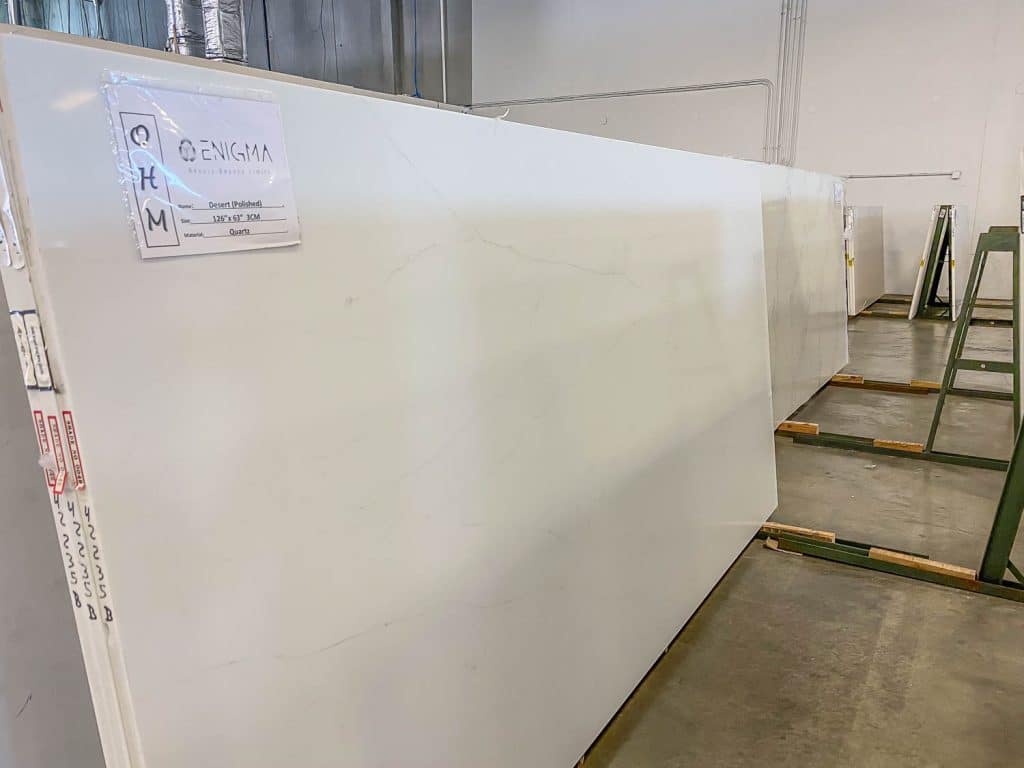
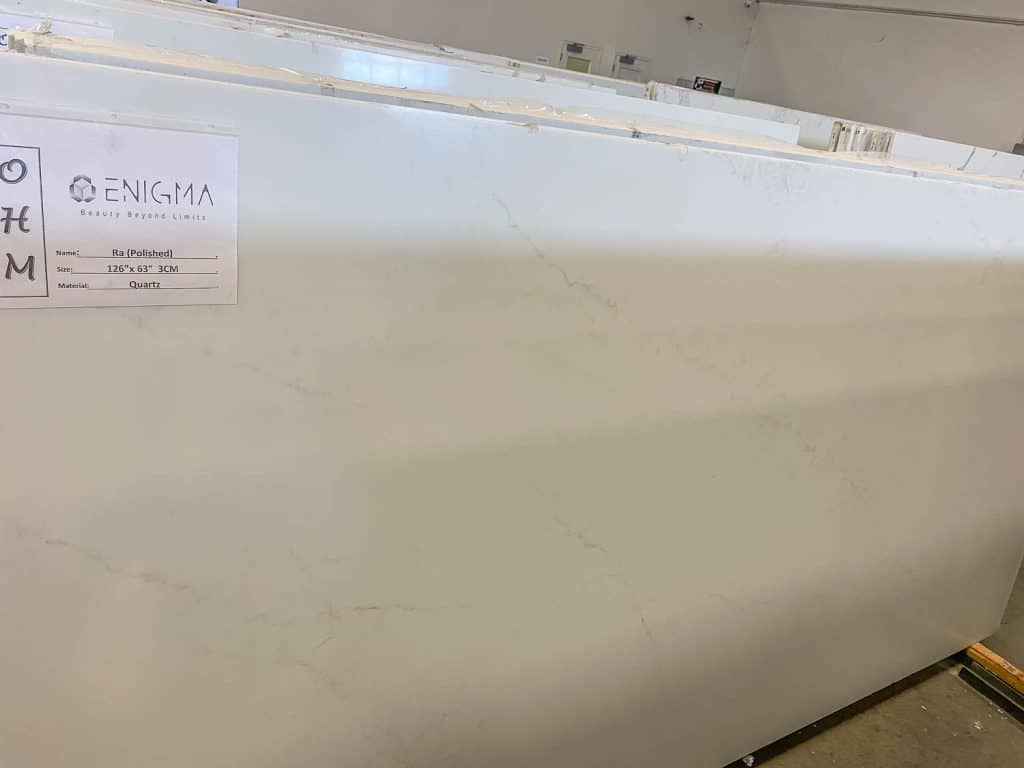
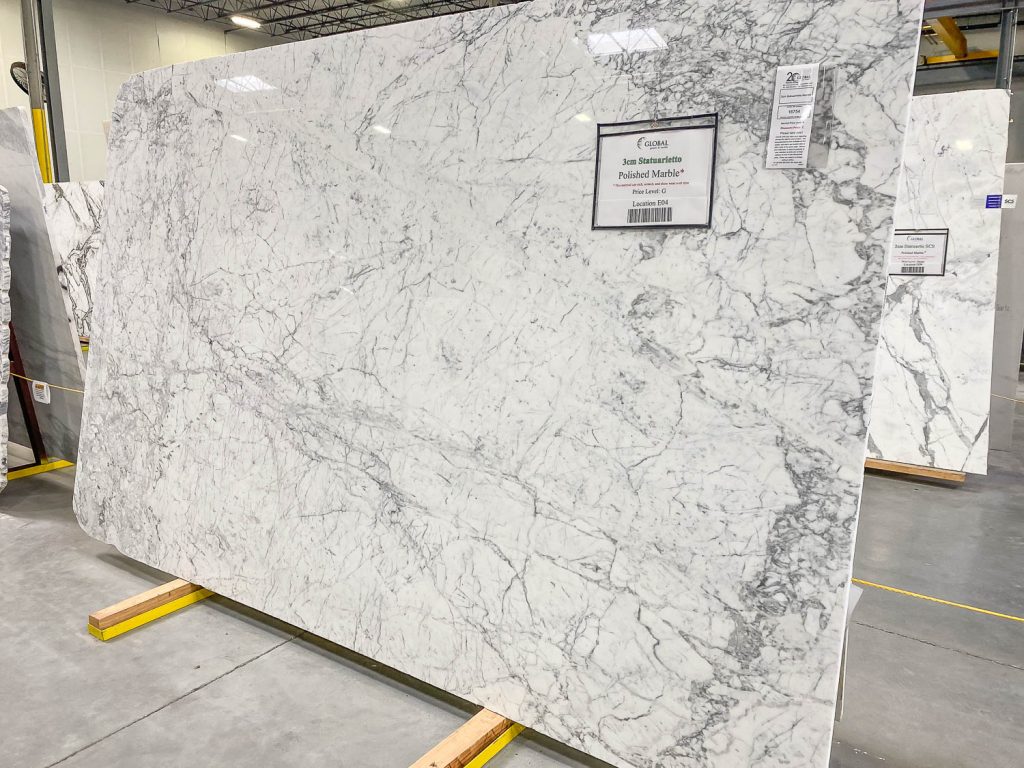

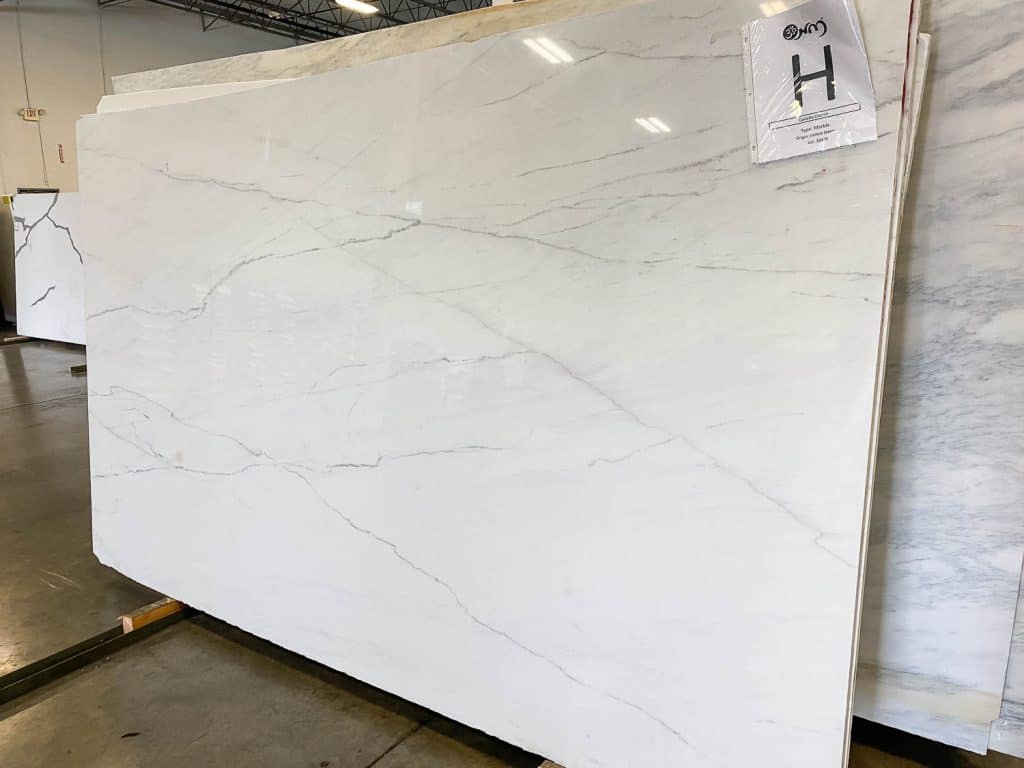
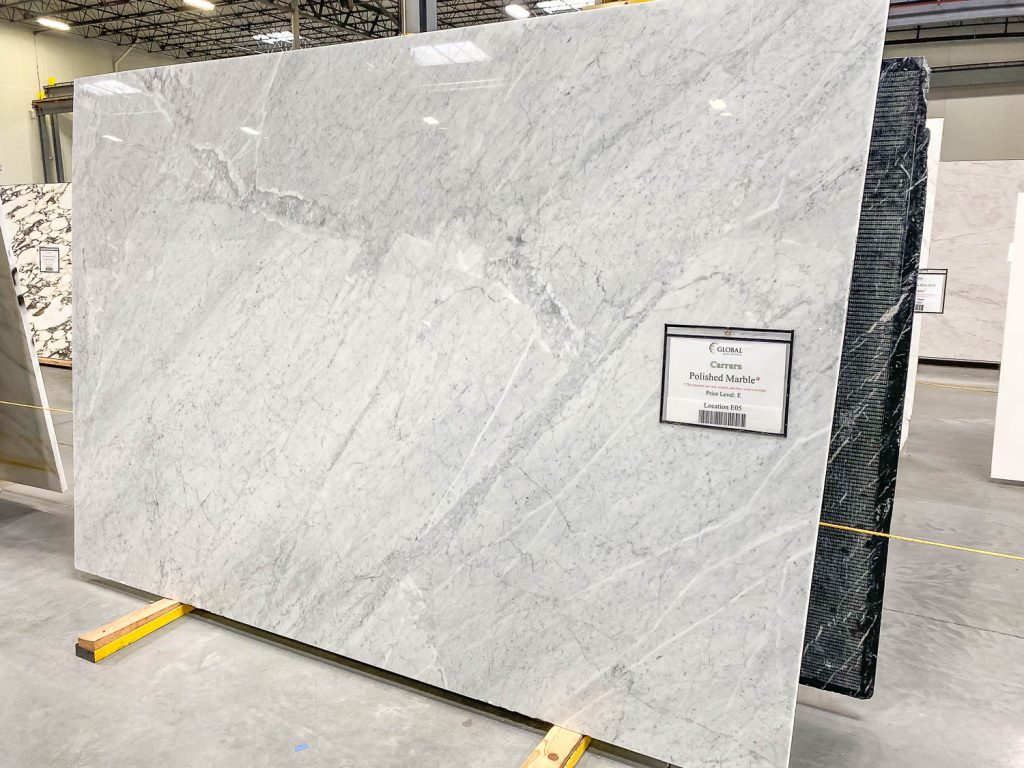
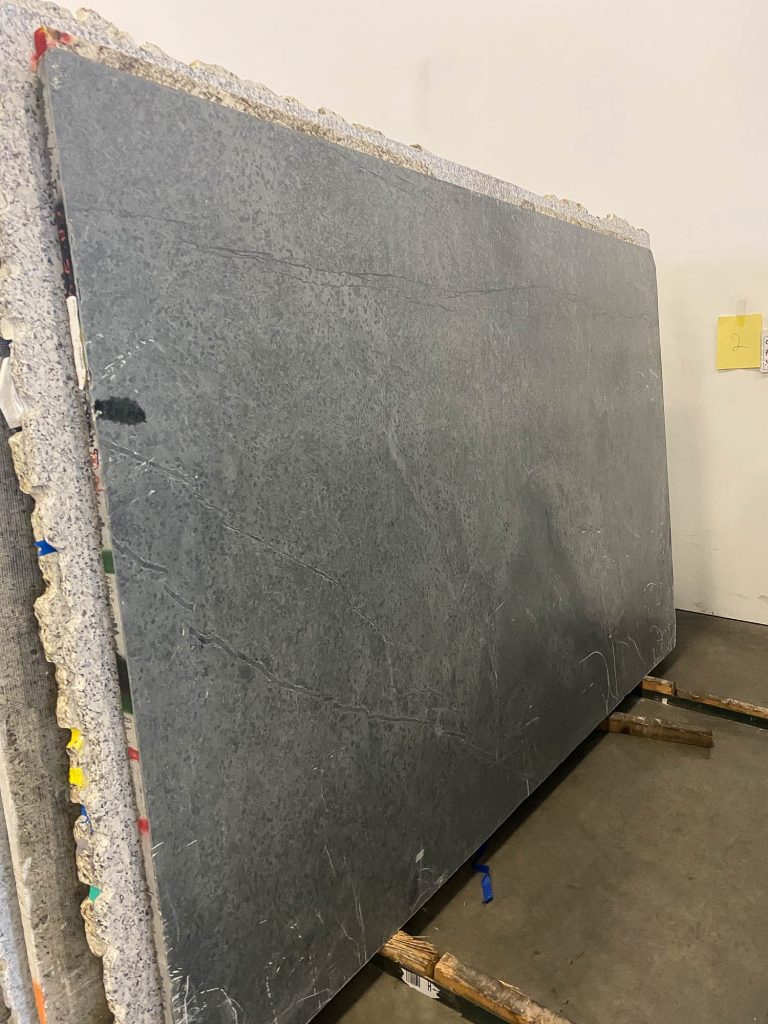

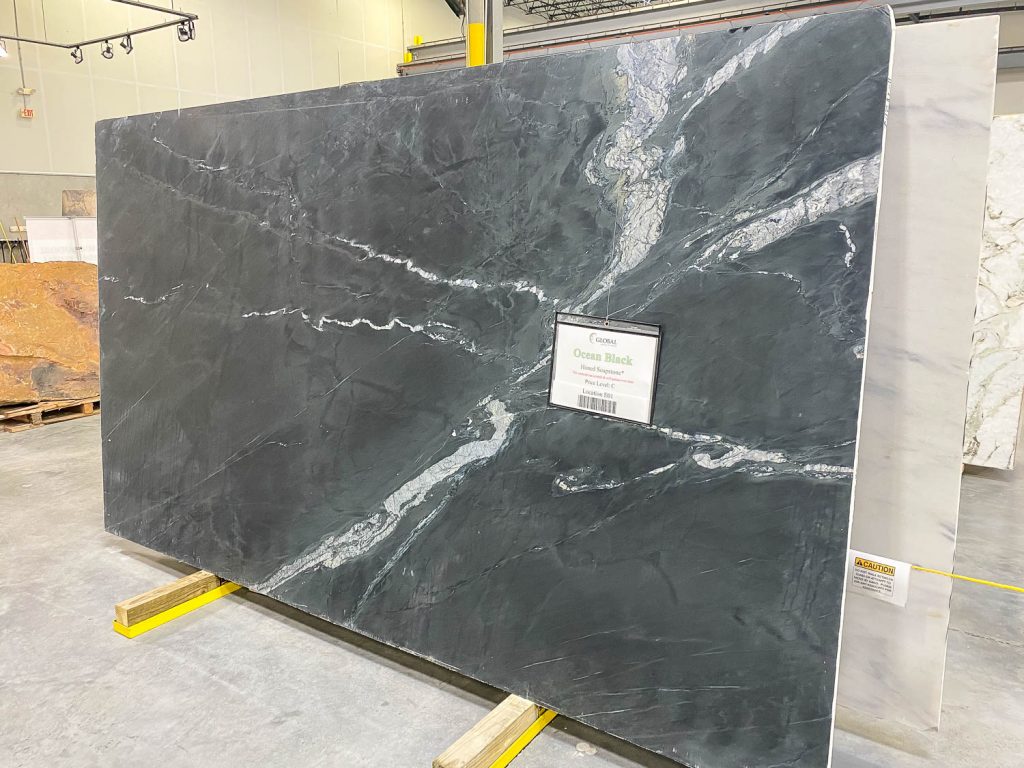
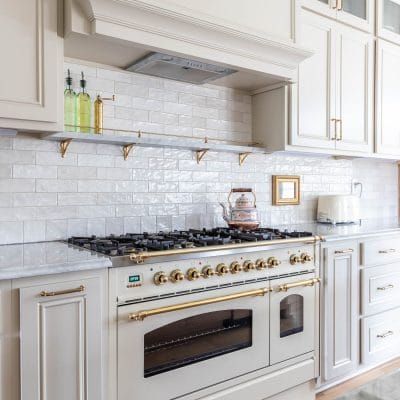
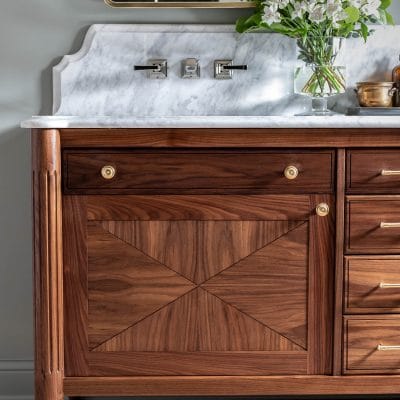
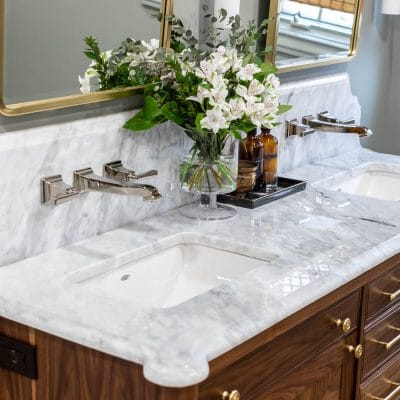
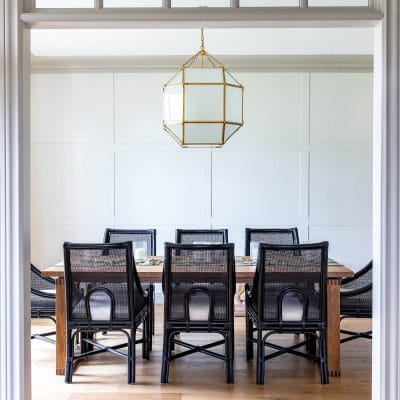
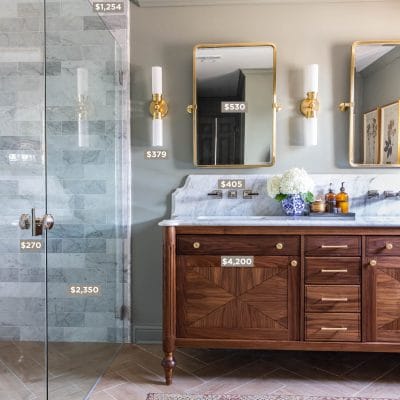
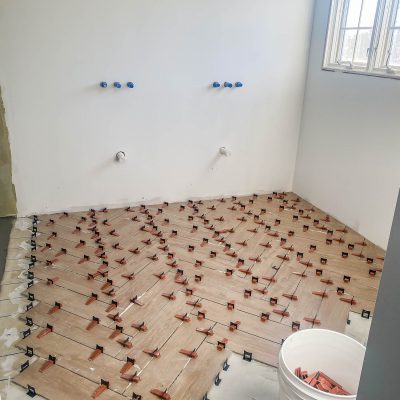
You might want to consider a quartzite which is a natural stone that looks like marble but is much more durable. Marble WILL be difficult to maintain and is not recommended for kitchen countertops due to its softness.
Soooo what was the verdict on the countertop? Which is best? I want to do our kitchen but what a decision!
Hi Barb,
That’s a loaded question! It really depends on your needs, preferences, and lifestyle. For us, while I realize natural stone will require more maintenance and may show wear and tear over the years (which is actually not a drawback, in my book), I just can’t quit it! I’m leaning towards natural stone for this kitchen. I’m working on a more in-depth post that will outline the pros and cons of different countertop materials.
Thanks Cindy! We did consider quartzite, but the slabs we saw weren’t the right color or cost! Quartzite was definitely out of the budget for us this time.
Agree with Cindy. I love the look of marble but not the hassles. We went with quartzite and love the look and the durability.
Have you considered honed granite…. I know granite seems so blah but the durability is hard to ignore. The honed finish will give it a different look than the standard polished look. Any option you choose is going to be beautiful!
Yes, we had granite in several of our past homes. I always thought it was indestructible, but the granite we removed when we demo’d this kitchen had chips in it!
One big point you missed on quartz countertops is brands. All quartz come in different brands. It is best to do your research on the types of brands of countertops. Quartz like clothing comes in several brands. Some brands are known and some brands most people haven’t heard off. Depending on your look you can get a quartz that look exactly like soap stone or a marble or a granite. You just need to find the brand. Cambria (which is not the most expensive,) has beautiful colors and patterns and guarantee color match between slabs. Cambria also has two pricing tiers. Standard and luxury. They have a 120 stand colors that fall into one price. Luxury is made up of 50 colors and they are one price. Cambria sets the price for person selling their product. So depending on how much mark up a company puts on the countertop is what you pay. Sile stone is know for their beauty in the blacks and darker colors. Cesar stone is know for their white. Pure white. Holding house carry the brands they want to sell. Most quartz is made out of the country. Cambria is made in MN. Quartz all come with a warranty and the brand all varies. So depending on the look you want you may have to visit several show rooms. Cambria has down is one the of best quartz countertops on the market. Soap stone is very beautiful for a natural product but you need to make sure you oil it otherwise you will be very sad as it dries out.
Thanks for the helpful insight, Meitt! We visited a couple of showrooms and looked at several different brands of quartz, including the three you mentioned. While beautiful, they still looked like fake marble to me. It lacked the depth, feel, movement, and variation of real marble. I really did try to like the quartz, simply because of the maintenance-free aspect of it, but in my opinion, it just didn’t compare to the beauty of marble and when I learned that the carrara marble slabs we were considering was cheaper than the quartz, it definitely moved up higher on the list! I did see some pretty convincing quartz that looked like soapstone though!
I really like marble. Anything else is just a close second. Just my 2 cents.
I chose Carrara marble for ours. LOVE IT! I had it honed. The little scratches turn white instead of just messing up the shine and becoming super noticeable. I do NOT baby my countertops! Yes people think I’m crazy, but I like the imperfections that you get over the years and there’s a story to go with every tiny ding (which also turns white on the honed) and little scratches and different etching. I will say I was worried about staining. I had the fabricator seal it, obviously. He sealed it 3 different times, 2 being before they brought it to install. I have zero issues and haven’t had to reseal in the 6 months so far. Water spots or oil spots turn darker, but the coolest thing is the stone absorbs them and they don’t remain dark. Bigger ones can take a month or two but they’ve all been absorbed so far and cant be found. The other dings and scratches also fade and absorb after a while, but still can be seen if you look for them. Like I said, I do not baby my countertops. I think I would have hated the polished bc you see everything from across the room so honed was definitely right for us. And if you get shiny and hate it, you can hone it. You would just probably need to reseal it. Honestly I’ve had granite stain easily just by a strawberry laying there too long. I figured after two trips to Italy and seeing marble EVERYWHERE including flooring in ancient buildings and public cafes, it was safe for a private single household. And lastly, the feel. Everyone rubs my countertops. Admittingly, I might have layed my face on them after they were installed. The feel and warmth just cannot be beat.
What I’ve learned. There’s two camps. Those that like everything to remain pristine and new looking, and then those that love character and imperfections and don’t care by the pristine look fading away. This is why so many people do not like marble. But if you are in the second camp, don’t worry about it.
We went with marble in our kitchen for our last renovation. It was beautiful, but we use a lot of lemons which created lots white marks which was not pretty. Next time we are considering quartzite or soapstone. I’d consider marble again, but only in bathrooms. Have fun!
Soapstone. Love it, had it in one house. Just used in kitchen remodel. Character and unique veining.
We actually installed white soapstone with dark grey veining in our old house. It looked identical to the marble slabs you show above. There are a lot doubt online about if white soapstone exists, but I have proof it does. No sealing required and it did have a great patina to it as the years went on.
Quatrz can be the best choice as these are available in more options, durable, stain-resistant & easy to clean and the most gives a gorgeous look to the kitchen.